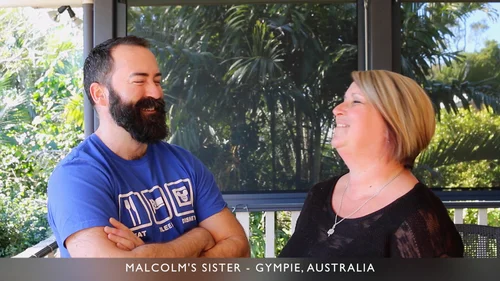Why do rollercoasters — the signature attraction of a theme park — exist?
Why have coasters become such enduring icons of popular culture, why have they entered our vernacular (think of the last time you heard something described as a ‘rollercoaster journey’), and what does our ongoing international love affair with these short rides to (seemingly) nowhere tell us about ourselves? These questions are being asked by Malcolm Burt, a film and television producer and 'rollercoaster academic' who embarked on an international documentary research project in an effort to find the answer.
We know generally what to expect from a rollercoaster or theme park ride – whether we choose to ride or not. What we don’t ask ourselves is why? Why do we pay to be scared? What does it say about us that we unquestioningly trek the often great distances to theme parks (generally located on the outskirts of major cities), happily pay not insubstantial sums of money and then wait in line for often over an hour – all for a 90 second ride to nowhere? What does this say about us as a society? And in a Western world that is generally safe, why do we pay for more fear?
The question of the roller coaster’s existence often receives a superficial answer: the public has a psychological need for the sharp bursts of fear and thrills, and roller coasters deliver—and very profitably. However, broadening the inquiry from rollercoasters to theme parks and thrill rides in general suggests that much more is at stake as well. In a society with so many sources of leisure to choose from, what does it mean for amusement parks to have so clearly risen to the top? What drives so many of us to make the trek to these parks (which are usually located well outside major suburban areas), to spend not insubstantial amounts of money to get inside, and then to wait sometimes 2-3 hours for a 90-second ride, without giving any of this a second thought? In the Western world, where we are mostly safe, why do we pay to be scared? Could it be that the world has changed tremendously since before the Industrial Revolution (when we were in genuine danger from multiple threats) but that we haven’t—that we subconsciously need a way to stay in touch with our primal selves?
Malcolm has already explored such questions through interviews with management and staff from parks as varied as Ocean Park in Hong Kong, Cedar Point in Ohio, and Dollywood in Tennessee; with major rollercoaster designers in Lichtenstein; with academics, professors, psychologists, and sociologists from New Zealand, Queensland, Indiana, and Shanghai; and with members of the American Coaster Enthusiasts, with whom he attended CoasterCon, the annual gathering of the most devoted (and colorful) fans in the USA. Malcolm acts as both narrator and interviewer in the documentary, incorporating as well his own deep connection to his subject, recalling his awkward youth and how he came to see theme parks and the rides they contained as an escape—as the only places where he truly felt alive (an outlook he found to be surprisingly common among other park devotees). The final filming segment for the project culminates in Malcolm returning to the park universally seen as the most magical of them all—Disneyland—to celebrate his 40th birthday, and to reflect that no matter how much older and wiser (and some might say more cynical) you become in life, you can always reconnect with the magic and illusion that only a theme park can provide.
Official preview and short clips from the film
Stills from the film










